At DSEI this week, Thales told me it is exploring ways to expand the capabilities of its Peregrine rotary-wing uncrewed system already in service with the Royal Navy.
The company is developing a product line based on Peregrine that could integrate new sensors, improved data processing, and potentially a weapons fit.
According to Thales, there is “no formal requirement from the Navy,” but the service has expressed interest in options for greater lethality, particularly for smaller ships that lack kinetic punch. “They’re struggling, particularly on some of the smaller ships, with kinetic effects. We picked that up and ran with it and thought, well, we could probably build it.”
The initial concept has already been proven. Thales said the weapon itself is cleared and the plan is to conduct a live firing demonstration in 2026, ideally in the UK. The company noted that while early tests could involve the S-100 platform, the ambition is to build up to the larger S-300 system, which can carry up to ten stores.
Funding for the project is already secured. What is now needed, Thales explained, is sponsorship in terms of access to ranges, support from the Ministry of Defence’s certification bodies, and buy-in from stakeholders to accelerate trials. “It’s aspirational, but it’s funded. It’s something we want to do on our own scheme.”
The prospect is seen as particularly attractive for offshore patrol vessels, which have limited organic strike capability. By coupling an armed UAS with improved processing and dissemination, Thales believes it can offer a deployable precision effect without requiring major ship modifications.
The Royal Navy has also now confirmed that Peregrine has reached its official in-service date. The system, developed with Schiebel, has already been deployed aboard HMS Lancaster and proven its value on live operations. According to Thales, it extends the “eyes and ears” of the fleet far beyond the horizon, with persistent surveillance and reliable performance in demanding naval environments.
Marie Gayrel, Thales Vice-President for ISR activities, said “Its operational success aboard HMS Lancaster demonstrates the potential of rotary wing uncrewed air systems to transform maritime operations. This milestone highlights our shared commitment to innovation, safety and delivering critical capability to the Fleet, fully aligned with the Royal Navy’s transformation agenda.”


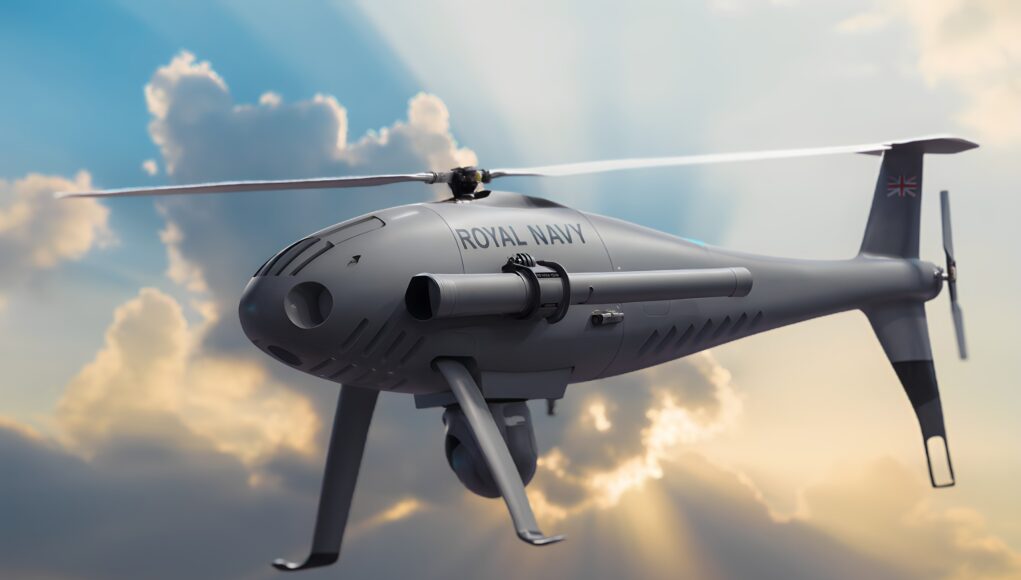
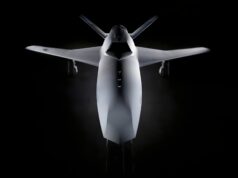

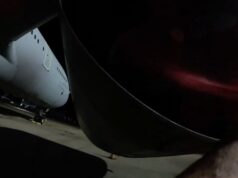
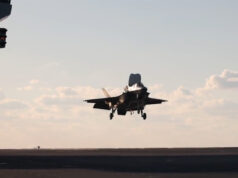
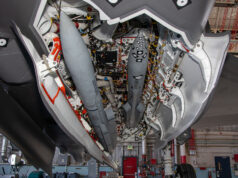

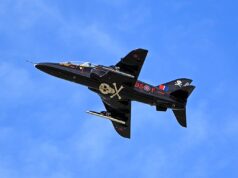
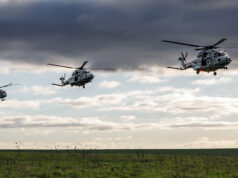

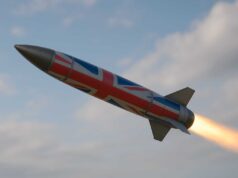

Sounds like an ideal solution, with such a low estimated cost and small foot print maybe two per ship?
A mature platform using existing weapons – if the MoD was functioning efficiently this is the sort of thing that should be done and dusted in weeks, maybe a couple of months. But demonstrations are not until 2026 sometime. That aside, could be a very useful asset.
I can’t believe that this has taken so long…
Just to get to this stage😒😤😡
Also…does anyone know what’s happening with the Jackal drone? I’ve not seen anything since a test firing of some missiles last year sometime. I was rather hoping it would be in Ukraine by now.
Must be a slow missile ?
Eyes and ears of the fleet.
Am I right in saying the RN has a single example, supported by contractors?
They seem paralysed with fear about making a decision and putting something, anything, into service.
I see no sign of anything changing?
Lancaster had two. Probably still does.
Thanks.
Two! A whole two!
Well if is the whole merry go round of everything needing to be cutting, bleeding edge rather than just work.
So, as you say, reasonable solutions are disregarded in favour of a bigger pot of jam tomorrow. Problem is the jam tomorrow budget is always raided….for in year balancing….
Money
It’s not even like they cost very much. It would be small money to have a squadron or 2 that could provide a small ship flight or 2 for every active vessel.
They cost around £25m for eight months testing. We bought a service we barely used.
Yes but they have now gone into full operational use ( the RN announced it 4 days ago) . That’s the first time the RN has a fully operational ISTAR drone that is integrated with the warship. For that 25 million they actually got a not bad deal.
2 small ship flights with 1 I masters search radar, EO/IR sensor set as well as full integration of the sensors with the T23s systems and physical work on the T23 to place drone ground control system in the correct place on the ship as well as the upper deck antenna work..
Essentially the 2 CAMM copters are now fully integrated parts of the ships systems with the outputs of the senors going straight into the ships systems.
It’s actually really quite impressive and a step up from what the RN has done before. If every frigate gets a fully integrated set of drones it will be massive.
If they do, I agree, and I couldn’t be more pleased. Two UAVs on each ship of the surface fleet would indeed be hugely advantageous and could be done at a reasonable price for something like Peregrine until larger drones like Proteus come along. Puma was never really up to the task.
I recall the RN saying that Peregrine was ready for operations, not operational. Is that splitting hairs on my part? Have I grown unnecessarily cynical?
Maybe that’s an indication that their capability isn’t what is advertised. Might not just be lack of money, it is possible it is also lack of performance.
If so, maybe the RN should stop putting itself up on the pedestal of perfect and buy good enough?
I jist looked at its Wiki entry.
A list of operators as long as your arm suggests it works just fine.
Why didn’t they dither, delay, procrastinate, and waste money.
I blame the RN leadership itself.
They are petrified of getting it “wrong.”
I remember these trials of UAV over a decade ago! Still nothing in service beyond a handful for trials.
And I think Scan Eagle was no different.
Whilst I tend to agree with you, I equally can’t help thinking with drone tech moving as fast as it is and this being a fairly old platform at this point, we might be having another watchkeeper scenario.
Should be part of the fit for each and every River OPV at least and of course the rest when they are able to get to sea!!!!! No brainer really
The Thales web site reports The S-100, equipped with a Thales data relay payload, was deployed in an exercise to monitor the transmission of data sonobuoys and relay it to a command centre ashore, permitting the detection and classification of possible enemy submarines. I wonder whether the Peregrine could deploy the sonobuoy. If the command centre were incorporated in the container which houses the Peregrine and plugged into the ship’s CMS a Type 31 or a River 2 might have some sub hunter killer capability.
Apparently the S300 will be designed to carry sonobuoys, 6 of them apparently.
Thanks. As I understand things a containerised S100 is a proven OPV asset for ISR. It does require a containerised ‘command centre’ which needs to be plugged in and integrated with the ships CMS. I don’t know whether all this has been done, or how much it would cost for all the OPVs. Would you make it part of some overall River 2 enhancement program; telescopic hangar + Wildcat? The RN has gone in another direction with HMS Trent for work in the Caribbean by enhancing the helicopter landing system to facilitate work with US drug enforcement helicopters. S300 is much bigger and would only be suited to frigate deployment, say T31. But T31 has a different CMS. Don’t know where we are with ‘command centre’ integration with that. T31 could carry a helo and Peregrine S300 or S100. Given that we also would like ( or prefer? ) more helicopters, I can see why the RN is taking its time to decide on ‘value for money’.
As I understand it the RB2s can take two containerised systems without impeding the flight deck. Adding a TEU container or a NavyPOD housing S-100 would not stop USCG helo landing or using the new visual aid landing system. There’s no reason not to have a UAV just because the OPVs can better host a helicopter.
I’m pretty sure Peregrine was integrated into TACTICOS even before it was into the BAE CMS, although I don’t know how extensively. Ah yes. I just found the report from a 2021 trial off the coast of Wales, not REPMUS as I had thought. Anyway, Peregrine is a Thales integrated system as is TACTICOS, so I wouldn’t foresee major technical difficulties in getting it on the T31s. Just a question of will and money.
Yep for the frigates it looks they are planning to integrate everything into the ships systems including the control centre, which is what they have done with NMS Lancaster, apparently it’s quite a low risk easy intergration ..
With the rivers it may be better to just use the container control. They are saying at all you need for 2 S300s will be one standard shipping container for the lot.. that would be a serious capability to put on a rivers 2.
Good info, thx. Understand the River 2 container storage point. Looks like the RN has decided to deploy Peregrine with its I-Master on frigates for surveillance and target i.d. which I assume would be passed to the Wildcat or NSM. Cheaper and longer on station than Wildcat so sensible investment for a significant enhancement in capability. But if the target is a drug runner and the platform is a River 2, without the helo you might not be able to intercept anyway; not such obvious value for money?
In the Caribbean, Rivers work alongside many other ships in a group effort. Theirs doesn’t need to be the platform that stops and boards just because it’s their UAV keeping track. The height will allow them to surveil a significantly larger area. As important, the Rivers provide disaster relief in the hurricane season, and overflying an area to survey damage would make planning much easier.
I’m not sure if the deployment on Lancaster will be a model for future Peregrine deployments.
I’m no expert but I can see a problem with the design in the thumbnail. 😂
agree – blow back will affest the tail rotor – if it doesn’t blow it off!
Hasn’t Thales already done the work to integrate the Martlet (which RN already uses on its Wildcats) onto the S-100? I believe it can carry two, though I think that’s without the I-Master radar which would reduce it to just one Martlet due to payload weight.
I don’t believe they ever did any intergration or live fire, they simple created a concept model, way back in 2008. They reported back in July they planned to start intergration work.
It did actually fly with a couple of LMM pods onboard….
Back in 2008…
I did not realise they flew it I thought They had just glued then on for effect 😂
It’s nice the Thales are trying to keep Peregrine fresh, but it should be down to the Navy demanding not the supplier pushing.
Peregrine should have already been integerated into at least one of the River class and probably two. Soon the only ship the they’ll have been integrated with, HMS Lancaster, will return to Blighty for decommissioning, and Peregrine will have to wait to be moved. We’ll have yet another gap as the barely learned skills of the last nine months atrophy within 700X NAS. The last integration contract was awarded to BAE in November 2021, and Peregrine started flying off Lancaster at the start of this year as an “Urgent Operational Capability”. Someone is going to have to push hard if it’s not to take three more years to find some budget (and their arse with both hands). I blame senior leadership for this, for whom UAVs seem to be always tomorrow’s capability; they are already many years too late. Rather than be distracted by the next shiny thing, missile ships, they need to concentrate on implementing today’s technologies before they become yesterday’s.
To keep the Peregrines flying (rather than leadership’s aspidistras) they could work independently of ship’s systems for now, and maybe when ready we don’t integrate them into another dying frigate (have we even planned to put them onto the Type 31s?). Instead it should be the turn of Medway and Trent. Moving the UAVs to multiple ships will finally shift the drones into a proper operational phase, and testing out a containerised capability (another idea whose time is continually slipping by, sans action) will also do the Navy some good.
these drones add so much as an airborne lookout, great for the rivers and reducing helicopter workload. early days for reaper levels of surveillance / lethality but worth exploring realistic potential
Should be part of the fit for each and every River OPV at least and of course the rest when they are able to get to sea!!!!! No brainer really
Agree. I assume they’re cheap too as defence systems go.
No…..the dithering goes on.
Although to be fair the navy have now formally declared the S100s fully operational..they have been now fully integrated with Lancaster’s systems. It’s no longer a bolt on trial but a fully integrated part of the ship.. which big to be honest.
Yes, after years.
As J says elsewhere, she’ll be decommissioned soon.
They are too slow and too timid and this will keep repeating with the next Drone.
True but there is a bit of a difference between flying a drone of a deck and creating a full ISTAR asset that is integrated into a warships systems. I’m not sure any other navy is ahead of that to be honest. Now the navy has installed, tested and declared the whole system operational we shall see if it becomes standard. I would hope to see within the equipment budget a line for every RN escort to be integrated with this system.
My worry would be that the RN or MOD get a bit confused and delay their light weight drone offer because they are waiting to see what their heavy drone will look like. But in theory Peregrine and Proteus are totally different capabilities.
Im actually a little bit optimistic on this one as everyone likes drones and they see this as a way to save money on small ship flights.
As long some bean counter does not see it as a way of removing Small Ships Flights helicopters totally!
One of the bits of news that seems to have gone under the radar is that 4 days ago the RN officially declared Peregrine operational..not just a test and evaluation programme but a fully operational system on a warship.
hMS Lancaster is now a surface combatant with a fully operational and integrated Drone system that is part of its systems not just a bolt on test. The sensors have been integrated with the CMS, it has a built in permanent drone control, exactly where it was wanted hard wired into the ship and all the data links are hard wired and all the software integrated.
That is a very big step and why Thales etc are putting private money into developing kinetic systems for it..
Finders crossed now the RN has declared it operational on one frigate it will become a standard fit for all.
Positive post
Not sure they’re allowed on this site… 😏
Yes, it nice to see a positive and informative post.
Welcome counter balance to the usual whiny ‘Get on With It Brigade’ who continually confuse feelings for facts.
Hope so.
the S100 system has been test flown firing 2x martlett missiles– a useful capability for any naval unit to deploy.
The larger S300 system can carry 4-8 martlett missiles with ease- so a much more capable strike platform- something the RN should definitely look to adopting- the sheer range and versatility of martlett means we should be equipping as many platforms as possible with this remarkable missile system and order in tens of thousands of reloads.